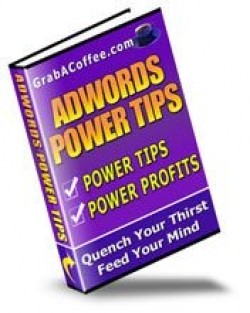
 License Type: Giveaway Rights
License Type: Giveaway Rights  File Size: 447 KB
File Size: 447 KB File Type: ZIP
File Type: ZIP
 SKU: 23470
SKU: 23470  Shipping: Online Download
Shipping: Online Download
Ebook Sample Content Preview:
Ad Group Keyword Grouping
When you create an ad-group you need to put keywords within the ad-group that are “semantically cohesive”. This means that the group contains keywords only that all relate to fulfill the needs of the searcher.
Ask yourself the following question:
“Should “x” keyword be in this group? After all the searcher is reading the advert I specified so does it make sense to display that advert for that keyword?”
If you’re answer is no then you need to take the contrary keyword(s) out of the adgroup and put into a new one of their own.
The Single Adgroup
Although at first it may seem tempting – collecting all your keywords and lumping them into a single ad-group for ‘ease of administration’ is not a good idea for a multitude of reasons.
First off, let’s say you have managed to find 1000 keywords for your campaign and you pop them all into a single ad-group. Yes, you get a single point of administration (or more accurately a single point of failure)
But look at what you miss:
The ability to group tightly cohesive keywords (which are the mindset of your prospects) and construct targeted adverts which are more likely to gain a click through to your site.
The ability to have specific landing pages on your site for specific customer psychographics. This alone will greatly increase your chances of getting a prospect respond to your call to action – be it an email address capture or a sale.
The ability to keep tight control over the budget of your ‘best’ keywords (where best are high traffic/high conversion). Sure you can adjust individual CPC’s within an ad-group, but the granularity and control is not there and the problems inherent with grouping too many loosely assembled keywords will ensure your efforts are thwarted and money wasted.
Remember Google rewards good advertising performance and looks at all advertiser histories & in particular, your advertising history when determining how well you are doing.
Adwords is not a fire and forget medium (unless you have a very niche market with very little competition – but the days of such markets are numbered).
Active campaign management is required to ensure you have not just a return of your investment but a positive return on your investment.
Keyword Research
Keyword Research is ostensibly a never ending pursuit regardless of the number of keywords (both of the positive and negative variety).
This is because – to paraphrase Einstein – “Everything is connected to everything else”.
Therefore there are a large number of keywords you can research. Take a look at the following diagrammatic representation with primary keywords surrounded by secondary and finally on the outside tertiary keywords.
Amit Singhal, principal scientist at Google, has said that over 50% of the 200 million searches performed a day have never been searched before. He also said:
"When performing a search most surfers give a 2-4 word query".
Most Google Advertisers start and finish with a set of primary keywords directly related to their business – the majority in fact do a very poor job at finding even primary keywords.
With secondary keywords, you may have landing pages on your site that have articles that are indirectly related to your business but neatly raise the awareness of your business to the prospect. Alternatively you could start an entirely different site focused on the secondary keywords but brokering traffic to your main site.
This is a classic Hub and Spoke pattern where your money site is the hub and secondary traffic brokering sites are the spokes.
The limit you take this approach to is entirely up to you (you could go to a tertiary level if you exhaust all secondary spoke options) and no doubt along the way with research you will spot new profit niches.







